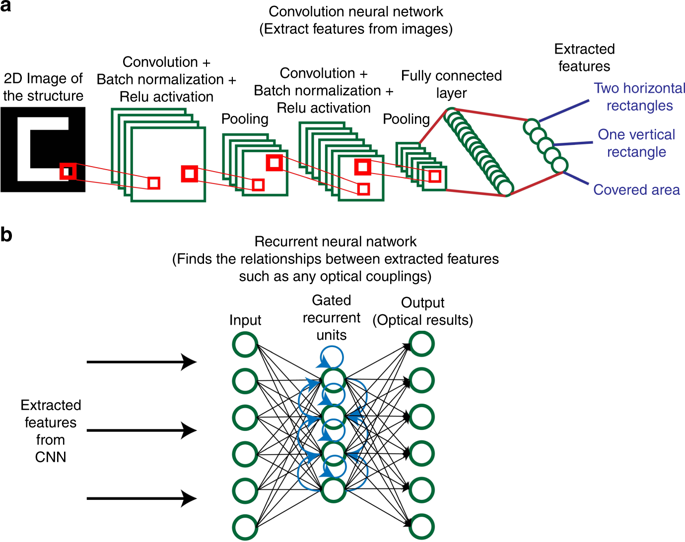Microsystems & Nanoengineering ( IF 7.9 ) Pub Date : 2019-06-17 , DOI: 10.1038/s41378-019-0069-y Iman Sajedian 1 , Jeonghyun Kim 1 , Junsuk Rho 1, 2

|
Image processing can be used to extract meaningful optical results from images. Here, from images of plasmonic structures, we combined convolutional neural networks with recurrent neural networks to extract the absorption spectra of structures. To provide the data required for the model, we performed 100,000 simulations with similar setups and random structures. In designing this deep network, we created a model that can predict the absorption response of any structure with a similar setup. We used convolutional neural networks to collect spatial information from the images, and then, we used that data and recurrent neural networks to teach the model to predict the relationship between the spatial information and the absorption spectrum. Our results show that this image processing method is accurate and can be used to replace time- and computationally-intensive numerical simulations. The trained model can predict the optical results in less than a second without the need for a strong computing system. This technique can be easily extended to cover different structures and extract any other optical properties.
中文翻译:

使用卷积神经网络和循环神经网络的组合通过图像处理寻找等离子体结构的光学特性
图像处理可用于从图像中提取有意义的光学结果。在这里,从等离子体结构的图像中,我们将卷积神经网络与循环神经网络相结合来提取结构的吸收光谱。为了提供模型所需的数据,我们使用类似的设置和随机结构进行了 100,000 次模拟。在设计这个深度网络时,我们创建了一个模型,可以预测具有类似设置的任何结构的吸收响应。我们使用卷积神经网络从图像中收集空间信息,然后使用这些数据和循环神经网络来教模型预测空间信息和吸收光谱之间的关系。我们的结果表明,这种图像处理方法是准确的,可用于替代时间和计算密集型数值模拟。经过训练的模型可以在不到一秒的时间内预测光学结果,而无需强大的计算系统。这种技术可以很容易地扩展到覆盖不同的结构并提取任何其他光学特性。



























 京公网安备 11010802027423号
京公网安备 11010802027423号